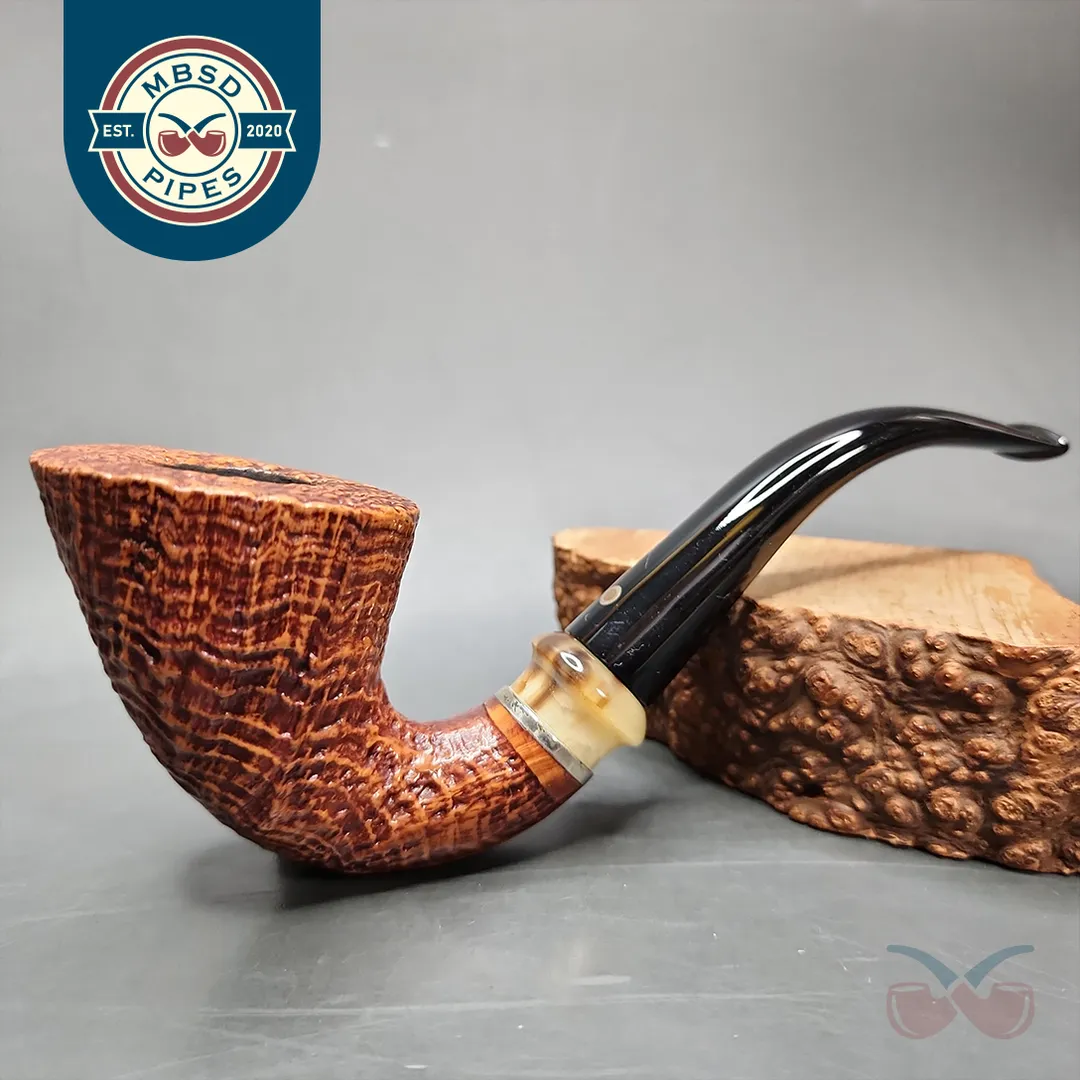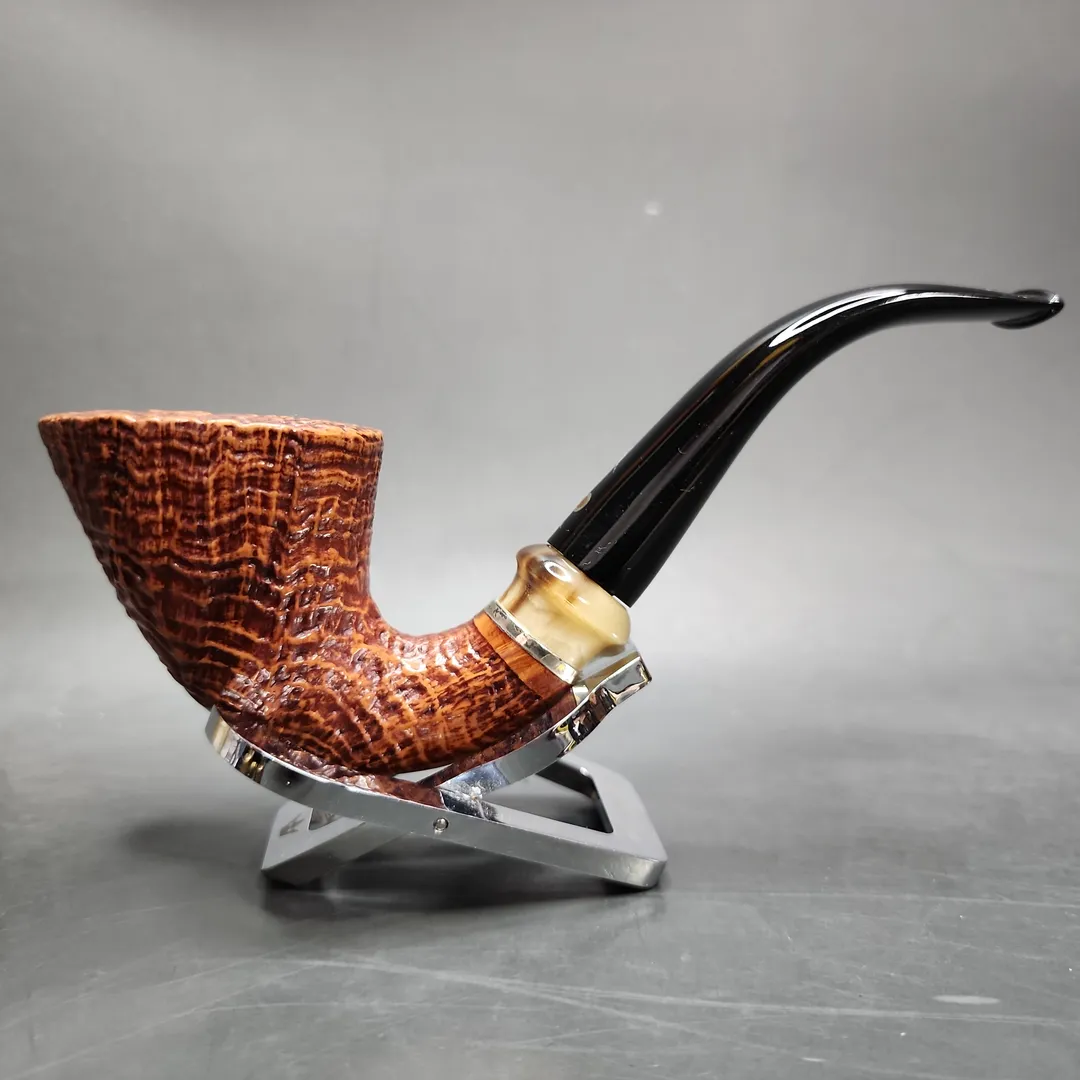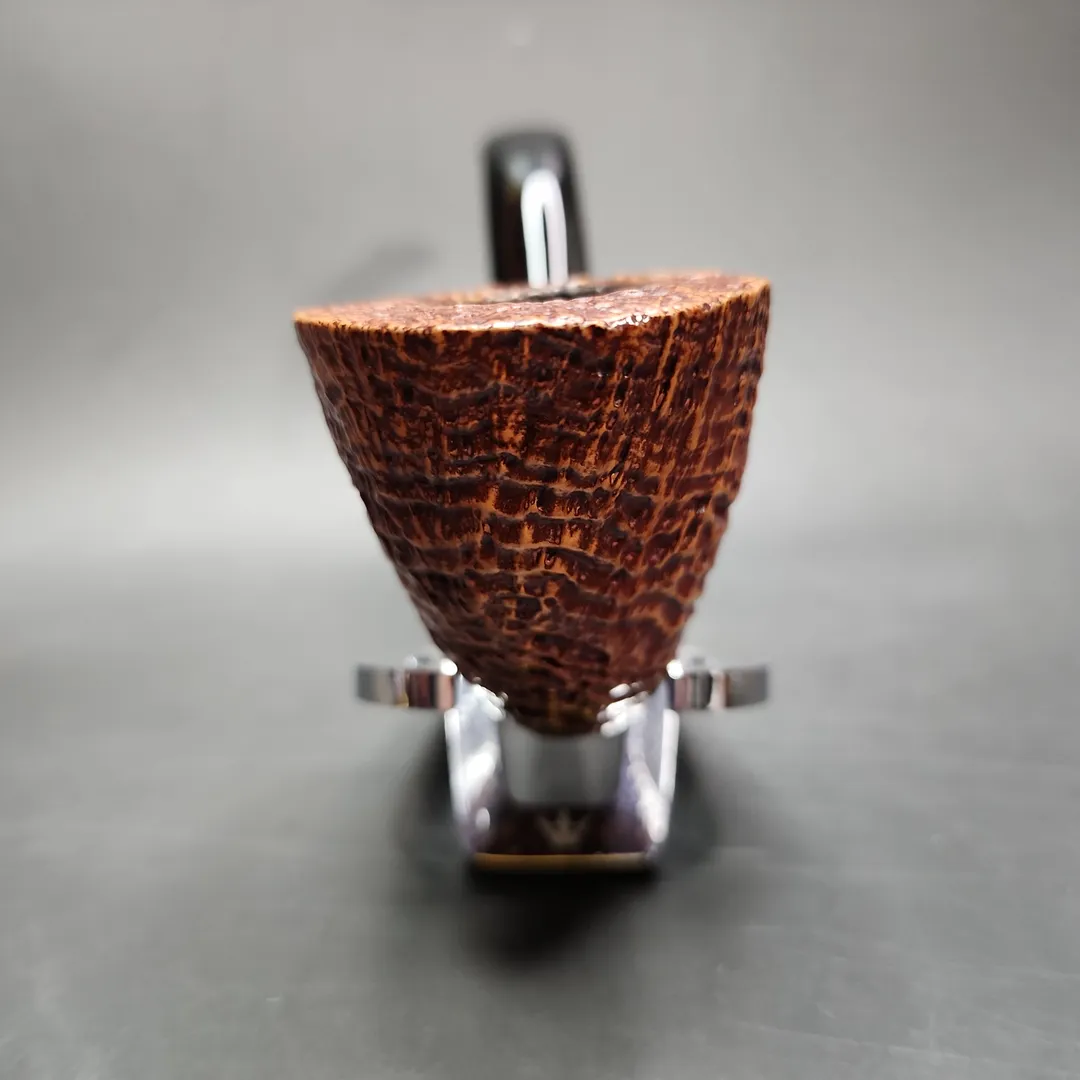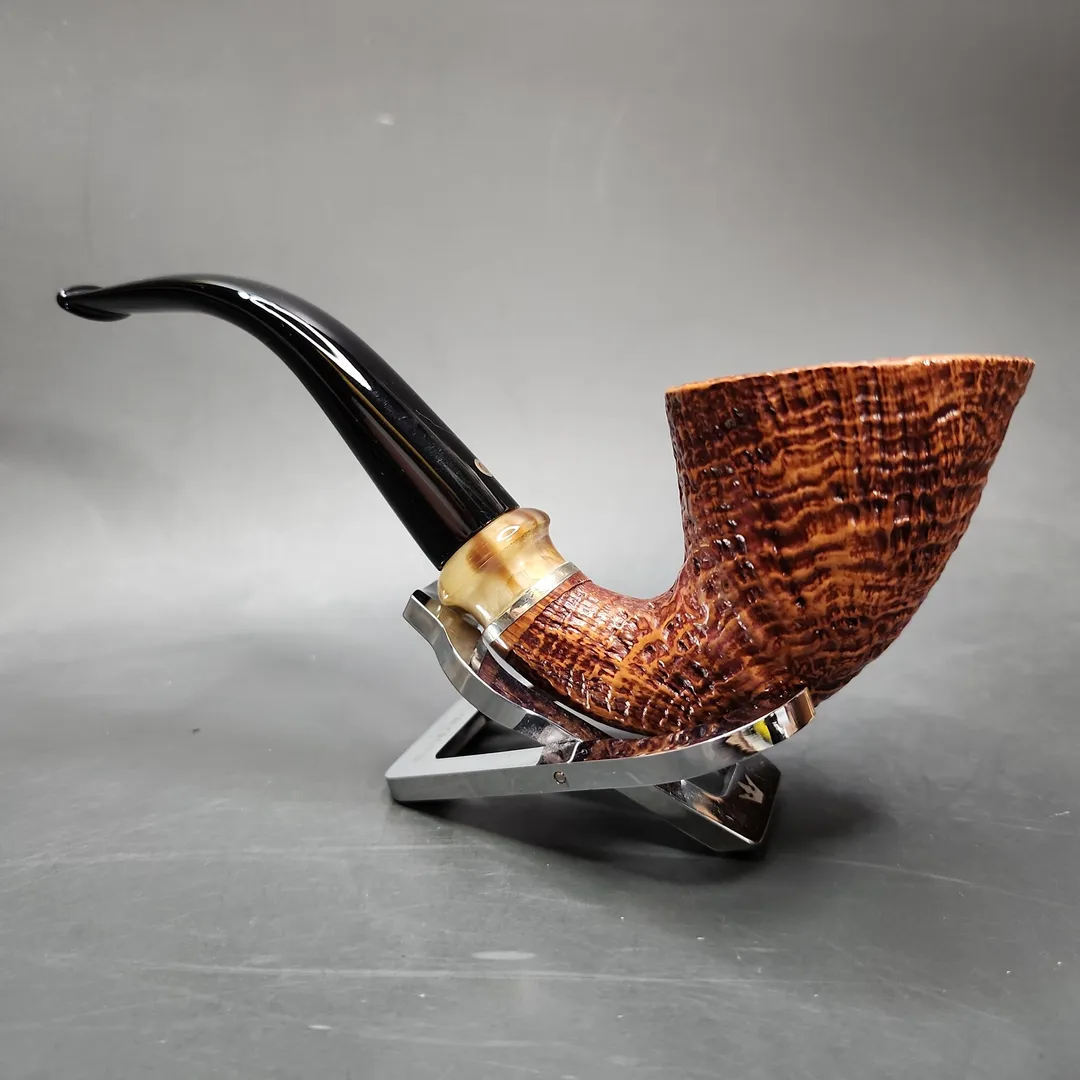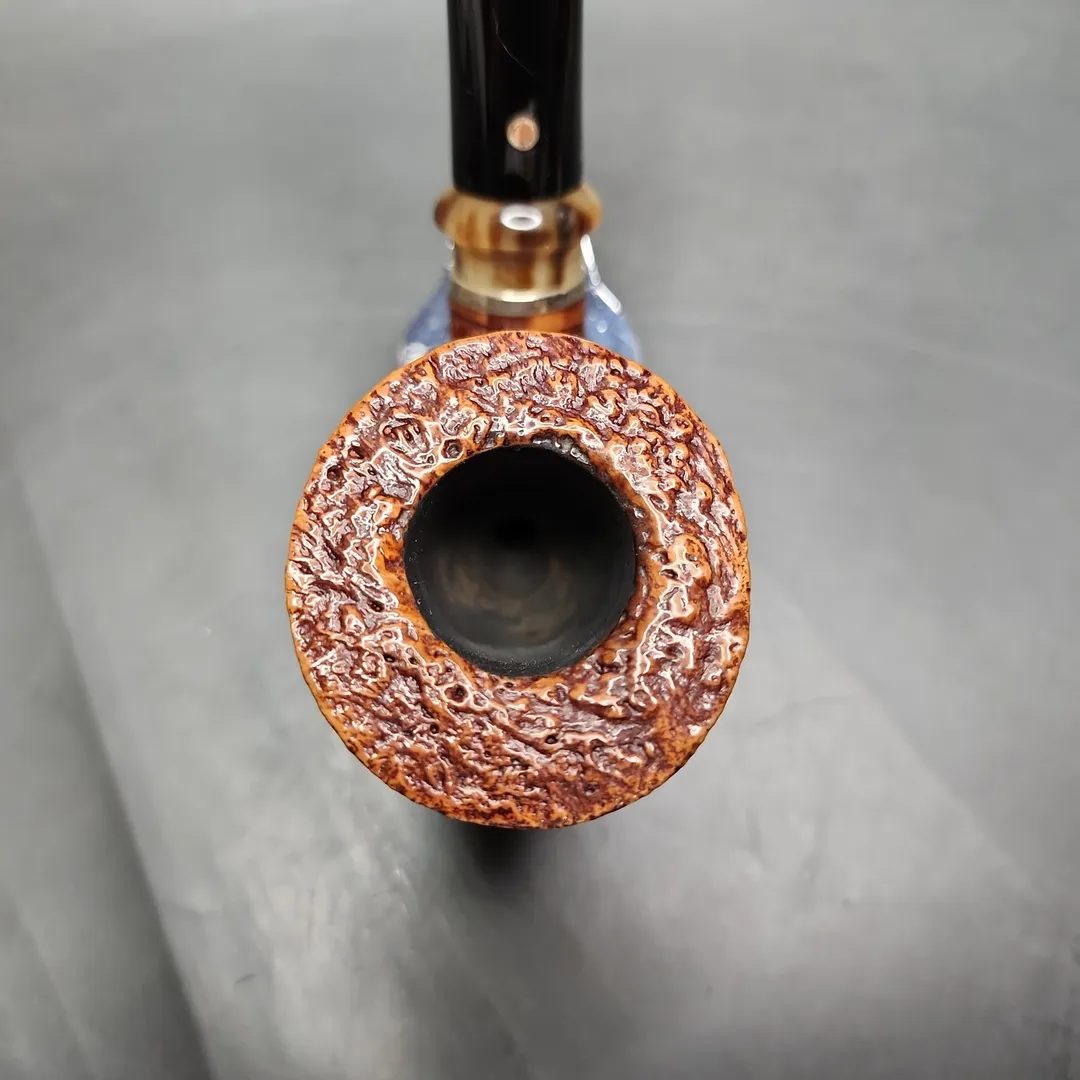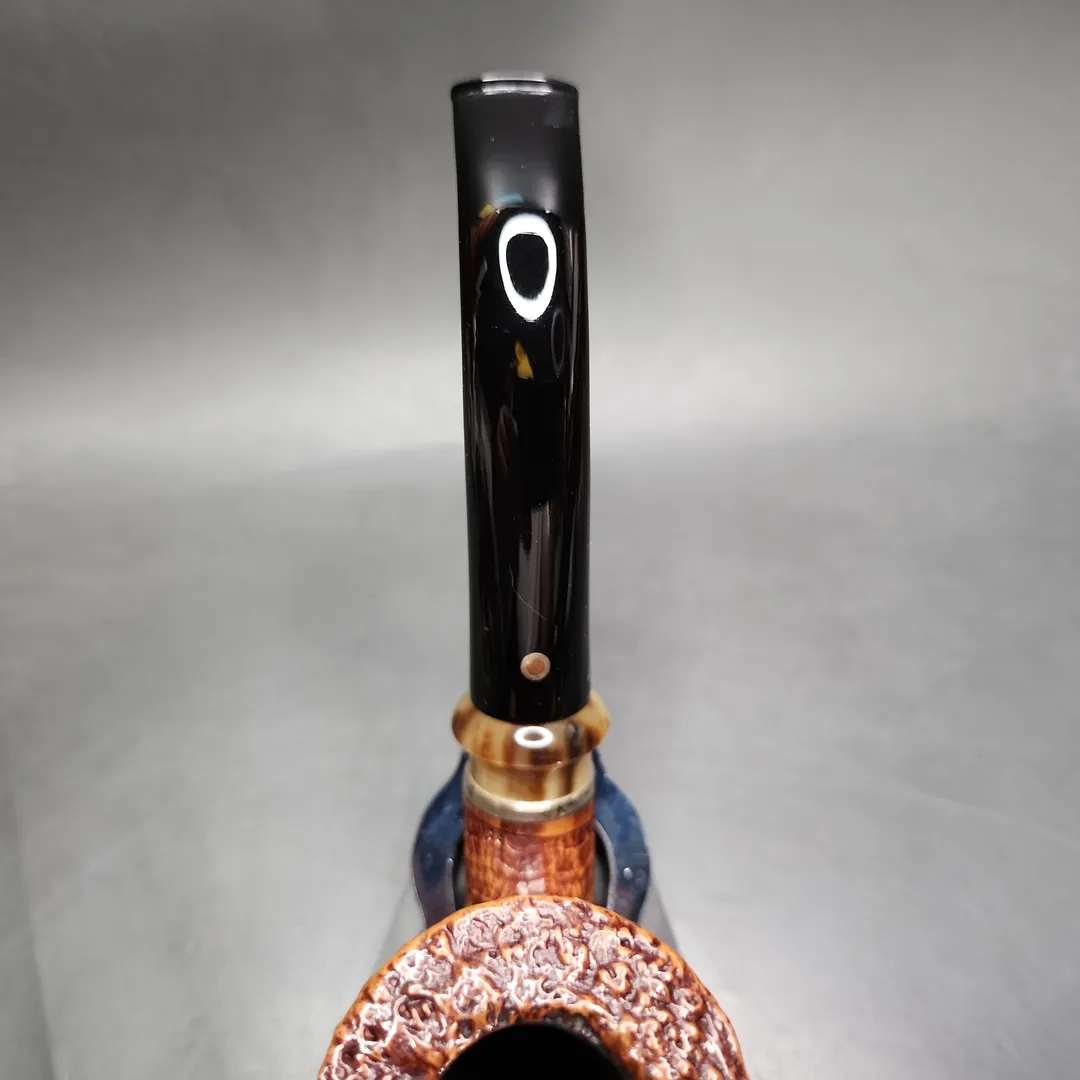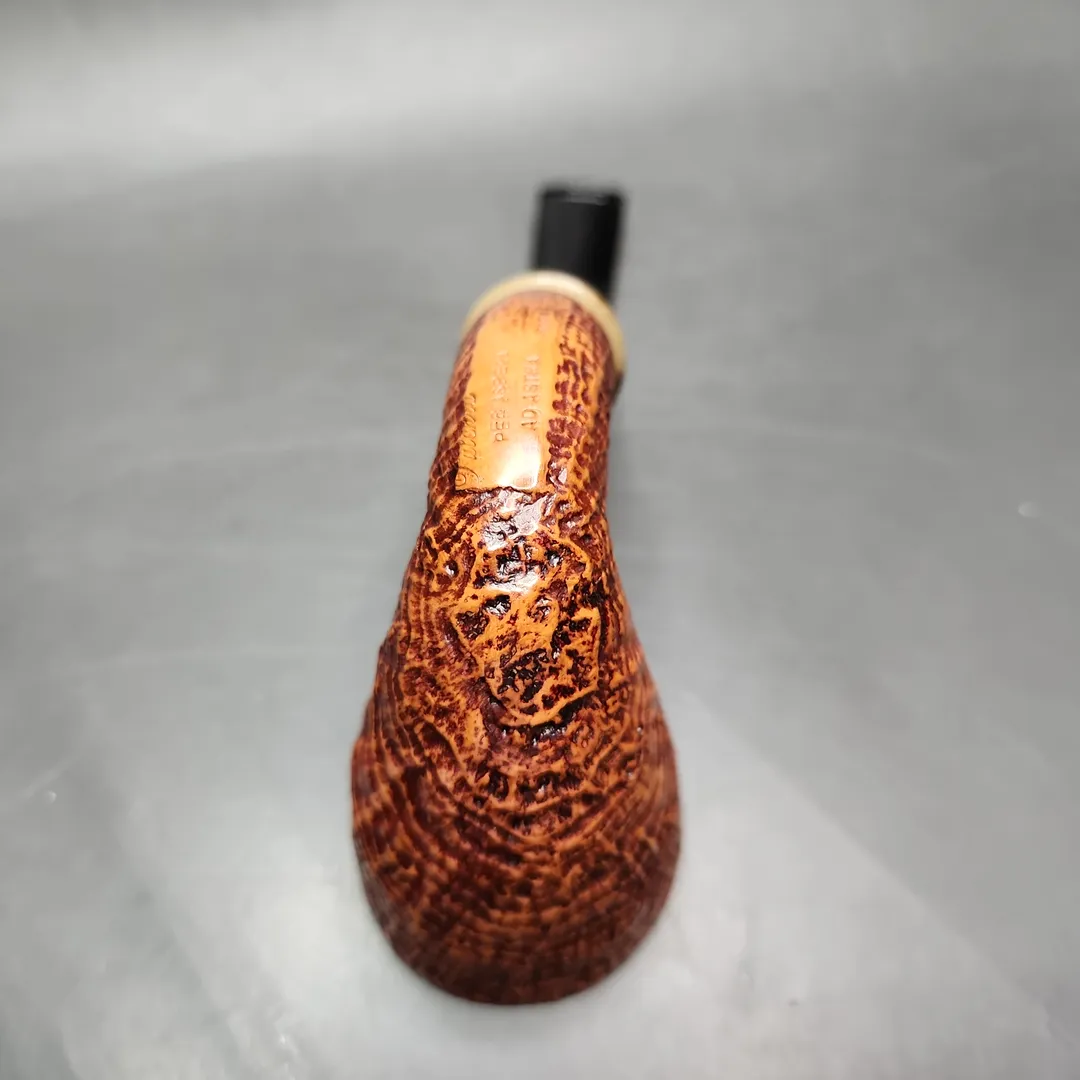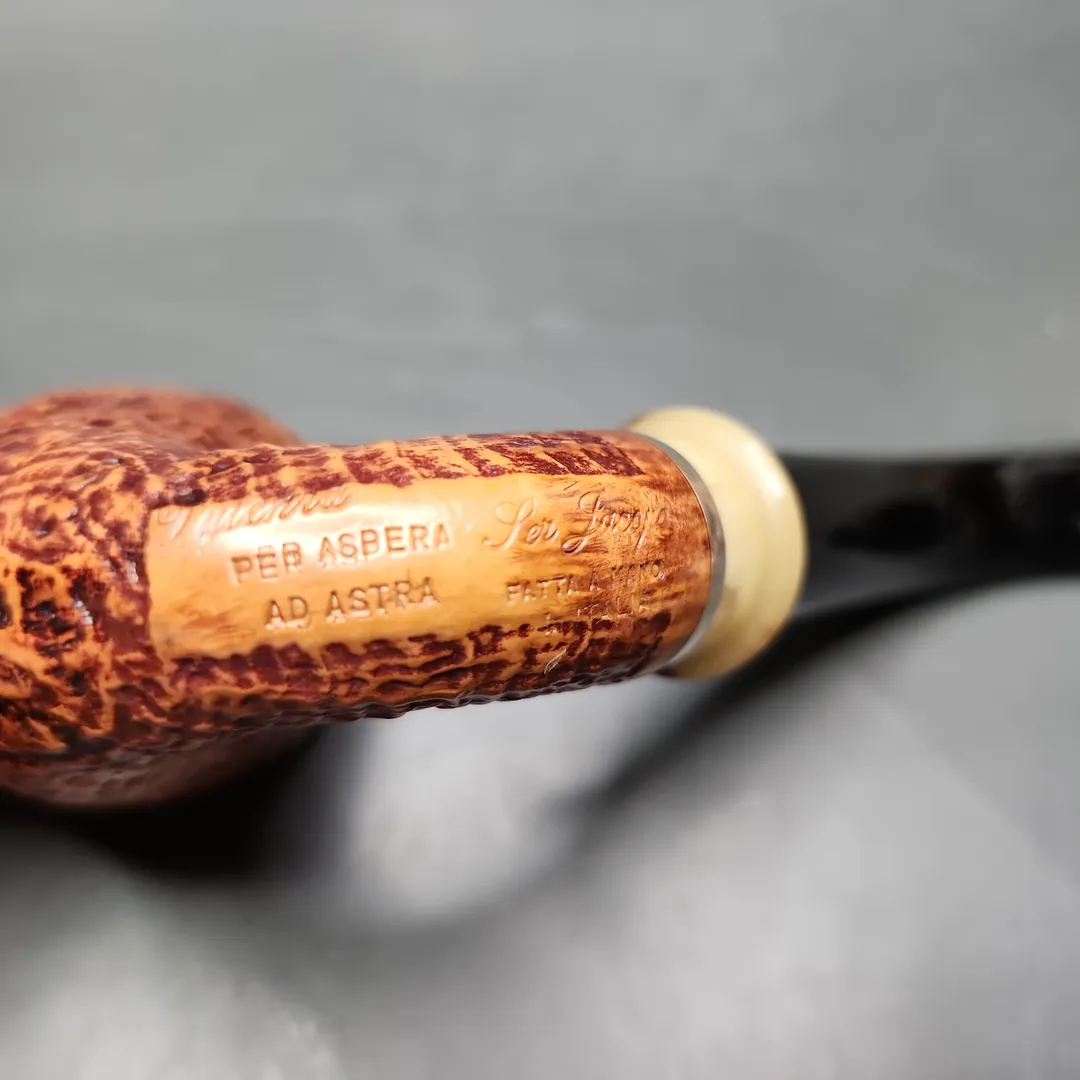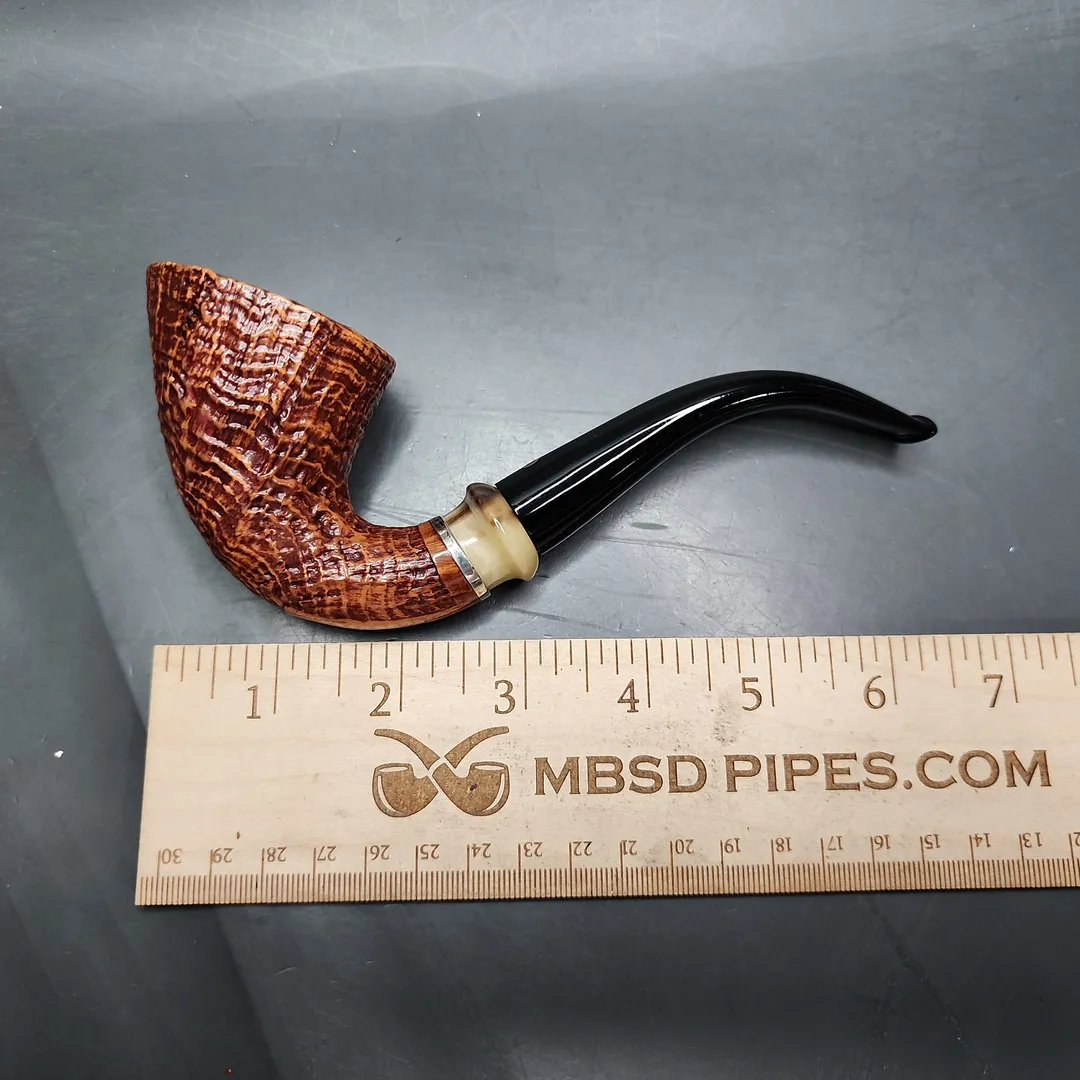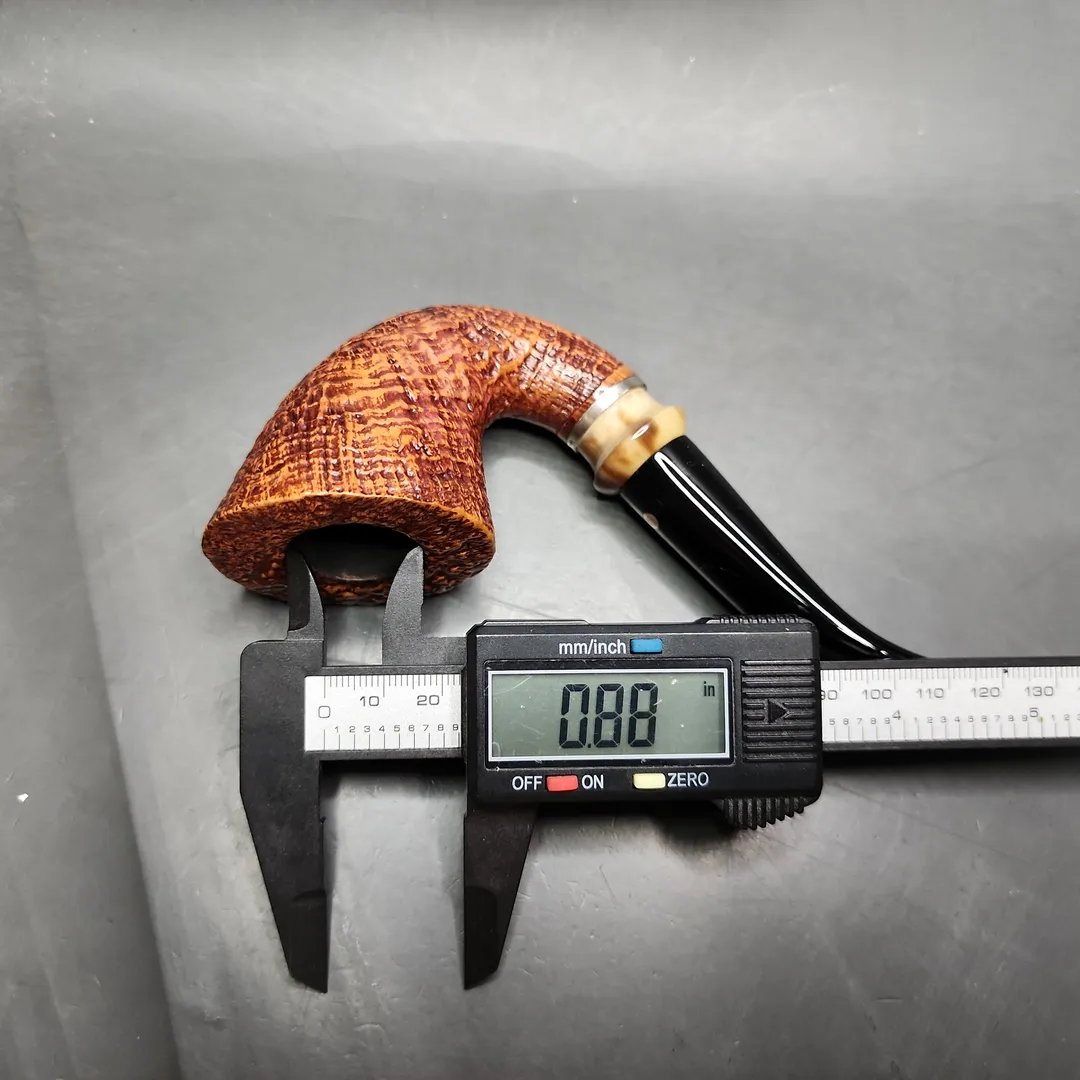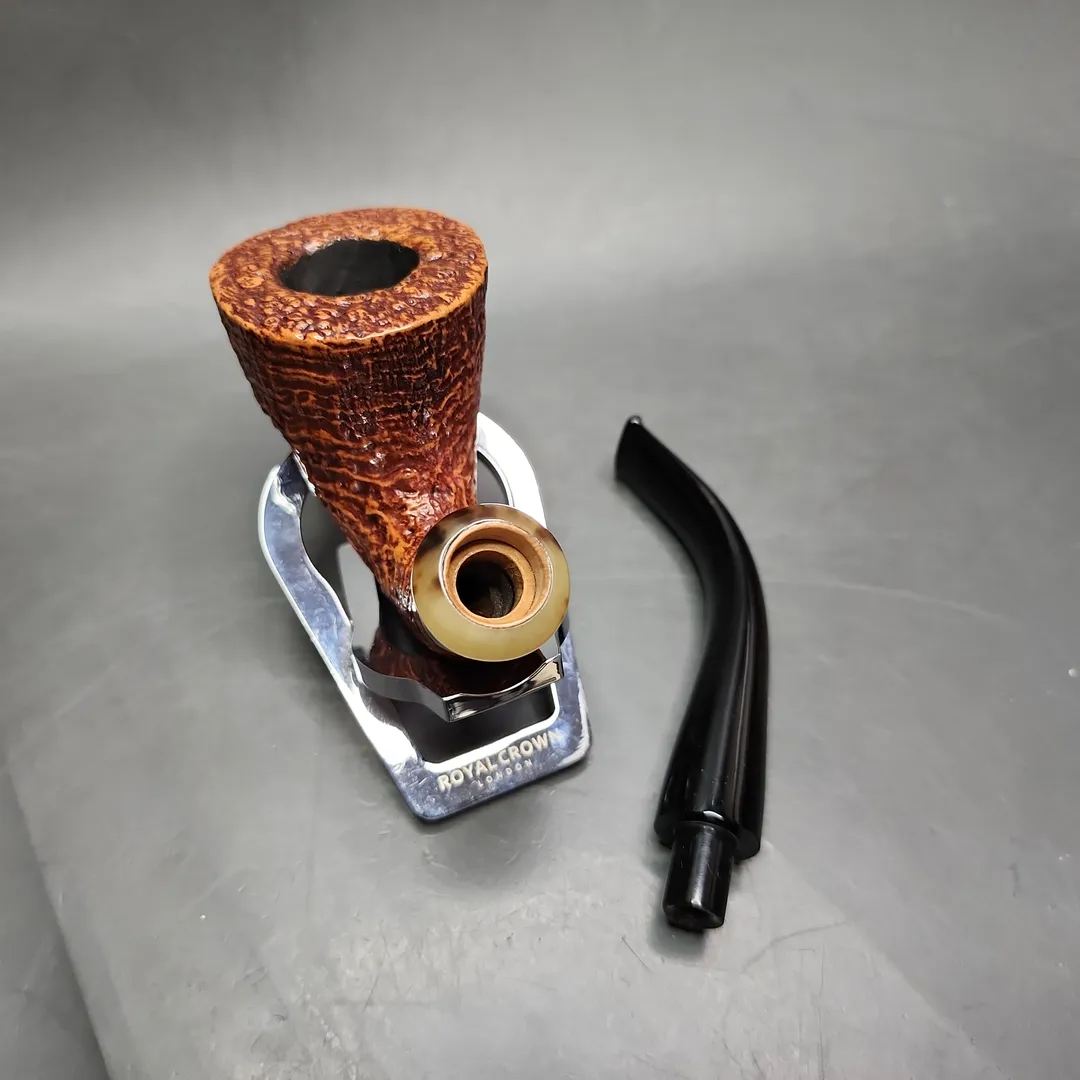Early Ser Jacopo Pulchra Sandblasted Calabash Estate Briar Pipe, Italian Estates
Out of stock
Description
Ser Jacopo is likely the most famous contemporary example of high-grade, workshop-made Italian pipes. It also belongs to a very special tradition in Italian pipe-making, having been established by Giancarlo Guidi and Bruno Sordini after the two had left another great Italian workshop, Mastro de Paja. Together, Guidi and Sordini created a brand of pipes that reflected their Renaissance sensibilities – even the figurehead of Ser Jacopo happens to be taken from a painting of a nobleman from centuries past – one that would soon become esteemed for creating unique and beautiful tobacco pipes that smoked just as well as they looked.
As I’ve mentioned in reference to previous Ser Jacopo pipes on MBSD, the naming conventions used in the make’s design portfolio are largely taken from Latin, the lingua franca of the Renaissance period. As the workshop doesn’t have a definitive shape chart, names such as Delecta, Melolontha, and Imago refer not to Ser Jacopo shapes but the mounts that the pipes may be fitted with. “Pulchra,” which is simply a Latin word for “beautiful” is also a name for a style of mount, with the one on this particular Ser Jacopo being comprised of a sterling silver band and a flaring horn ferrule. Judging by the stem logo, which is a an inlay of dried sea coral inside a silver ring, this is a very early Ser Jacopo pipe. For those who don’t know, when Ser Jacopo was founded in 1983, this was the stem logo used, unlike the silver “J” seen on contemporary pipes. This logo was dropped soon after, apparently due to an intellectual property dispute with another Italian brand (reportedly Armellini, but I wonder if it was Barontini instead). By 1997, the coral Ser Jacopo used for their inlays had become a protected species, so the logo was changed again, first to a red Plexiglas dot, then to the silver “J.” As this Ser Jacopo doesn’t even have a finish code, which would be used to differentiate dark from light sandblasts, I’d guess that this is a very early Ser Jacopo indeed, which makes it all the more impressive.
-J.M.
The condition is great. Some inner rim darkening, but nothing major.
Details:
Length: 6″ / 152.4mm
Bowl Width: 0.88 / 22.35mm
Bowl Depth: 1.75″ / 44.45mm
Weight: 2.1oz / 62g
Additional information
| Weight | 15 oz |
|---|
| Condition | Used |
|---|---|
| Notes | Restored |


